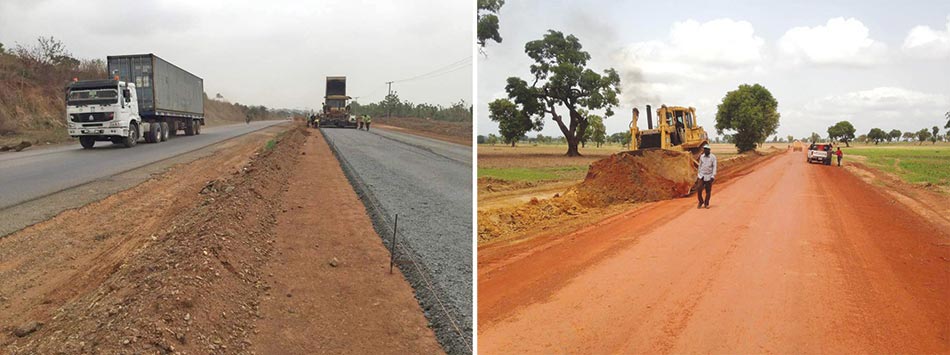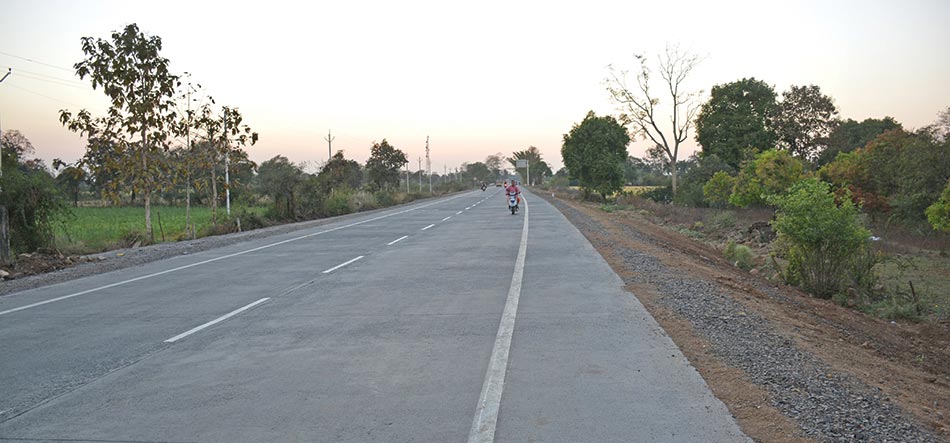SoilTechMk. III designs roads and reduces construction time and costs
The world has changed dramatically during the last 100 years, with phenomenal advances in medicine, aircraft design, motor industry, cell phone technology and the computer industry to name but a few. However, the vintage McAdam layered road design has advanced very little over the last 190 years.
 Road engineers are known to be somewhat conservative in their designs, relying on good, faithful emperical data pertaining to material selection and their respective compressive strengths.
Road engineers are known to be somewhat conservative in their designs, relying on good, faithful emperical data pertaining to material selection and their respective compressive strengths.
Smart Materials for Road Construction
Polyroads, a South African company, manufactures a range of innovative and environmentally-friendly and Smart Materials for the road construction industry. Polyroads’ JV partner in India for more than 10 years is Kaveri Ultra Polymers Pvt. Ltd, with offices in Bangalore, Mumbai and Kolkata.
Nick Muller, CEO, Polyroads, says, "Smart Materials challenge the core of conventional road design and construction by bringing in unprecedented resilient modulus to the pavement layer material, which is required for Mechanistic-Empirical (ME) road designs. The improved E-modulus of Smart Materials reduces the number of required supporting aggregate layers. Conventional road design typically comprises four to five layers of road materials with varying degrees of compressive strengths. In comparison, SoilTechMk. III designed roads will require one or two layers to be stabilized, thereby, substantially reducing construction time and costs."

Cement stabilized materials, by nature, display limited e-modulus characteristics, and hence, the need for strong supporting substrate layers. Conversely, SoilTech being an elastomeric polymer, significantly increases the e-modulus of the road materials. The e-modulus of the material is the measurement stress over strain and determines the materials ability to retain its former shape after the load/stress has been removed, without showing permanent deformation of the road layers.
Most road designers simply ignore the E-modulus factors of materials when doing a road design based on cement stabilizing, and simply focus on the compressive strengths of the materials. The reason is quite simple – concrete does not have great e-modulus properties, so engineers simply focus on CBR results and do not factor in e-modulus.
SoilTech Mk. III, a third-generation polymer, has been purposely designed to increase the CBR and the e-modulus of materials. SoilTech is used extensively on mine haul roads where 300 ton trucks with two axles are common. The rear axles carry 60% of the load, which equates to 195 tons on a single axle. This is 24 times more than the international equivalent single-axle load (ESAL) specification of 80kN. Furthermore, nano-polymers inherent in SoilTech will migrate from the stabilized layer into the sub-grade, further strengthening the supporting layer.

Smart Materials – Multiple Beneficiaries
Smart Materials is a game changer for the road construction industry with its numerous benefits:
Customers:
At the IRC road conference in Bangalore 2014, Late Dr. L.R. Kadiyali stated that India consumes enough aggregate annually to build a road around the world, 6-m wide x 600-mm deep. Current road design based on the importation of good borrow material from an environmental perspective, is simply not sustainable.
There is no doubt that Smart Material development and production will accelerate in the coming years.

Smart Materials for Road Construction
Polyroads, a South African company, manufactures a range of innovative and environmentally-friendly and Smart Materials for the road construction industry. Polyroads’ JV partner in India for more than 10 years is Kaveri Ultra Polymers Pvt. Ltd, with offices in Bangalore, Mumbai and Kolkata.
Nick Muller, CEO, Polyroads, says, "Smart Materials challenge the core of conventional road design and construction by bringing in unprecedented resilient modulus to the pavement layer material, which is required for Mechanistic-Empirical (ME) road designs. The improved E-modulus of Smart Materials reduces the number of required supporting aggregate layers. Conventional road design typically comprises four to five layers of road materials with varying degrees of compressive strengths. In comparison, SoilTechMk. III designed roads will require one or two layers to be stabilized, thereby, substantially reducing construction time and costs."

Cement stabilized materials, by nature, display limited e-modulus characteristics, and hence, the need for strong supporting substrate layers. Conversely, SoilTech being an elastomeric polymer, significantly increases the e-modulus of the road materials. The e-modulus of the material is the measurement stress over strain and determines the materials ability to retain its former shape after the load/stress has been removed, without showing permanent deformation of the road layers.
Most road designers simply ignore the E-modulus factors of materials when doing a road design based on cement stabilizing, and simply focus on the compressive strengths of the materials. The reason is quite simple – concrete does not have great e-modulus properties, so engineers simply focus on CBR results and do not factor in e-modulus.
SoilTech Mk. III, a third-generation polymer, has been purposely designed to increase the CBR and the e-modulus of materials. SoilTech is used extensively on mine haul roads where 300 ton trucks with two axles are common. The rear axles carry 60% of the load, which equates to 195 tons on a single axle. This is 24 times more than the international equivalent single-axle load (ESAL) specification of 80kN. Furthermore, nano-polymers inherent in SoilTech will migrate from the stabilized layer into the sub-grade, further strengthening the supporting layer.

Smart Materials – Multiple Beneficiaries
Smart Materials is a game changer for the road construction industry with its numerous benefits:
Customers:
- Road projects are completed faster
- Cost savings is 25-35% cheaper than conventional roads
- Construct 25 – 35% more roads with the same budget
- Due to the higher e-modulus, roads have increased longevity
- Less maintenance
- Projects are completed faster
- Complete more projects in a calendar year
- Improved cash flow
- Innovation in road design – become industry leader
- Repeat business from satisfied customers
- Shorter construction time
- Open stabilized, unsealed roads to traffic 24 hours after construction
- Place DBM or wearing-course seal four days after construction
- Road construction projects are less impacted by monsoon
- Complete three times more projects per annum
- Same plant is used to complete more projects per annum – no extra costs
- Less diesel costs per project
- Improved cash flow
- Reduced machinery maintenance per project
- Improved bottom-line on balance sheet due to increased efficiencies and more project sign-offs
- Reduce borrow-pit aggregate by utilizing in situ materials
- Reduce carbon emissions by 92%
- Water reduction due to fewer layers and no need to keep the curing road damp
- Zero toxins

At the IRC road conference in Bangalore 2014, Late Dr. L.R. Kadiyali stated that India consumes enough aggregate annually to build a road around the world, 6-m wide x 600-mm deep. Current road design based on the importation of good borrow material from an environmental perspective, is simply not sustainable.
There is no doubt that Smart Material development and production will accelerate in the coming years.
NBM&CW August 2018



















